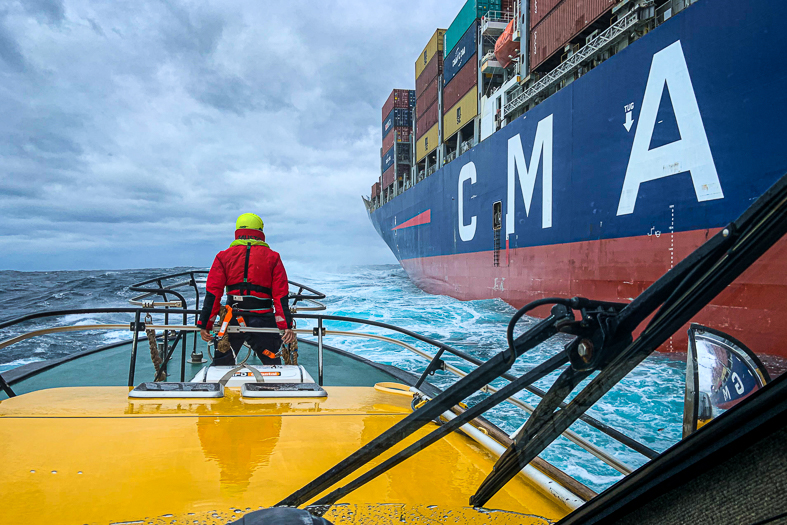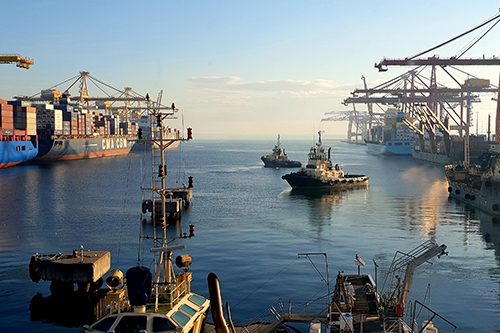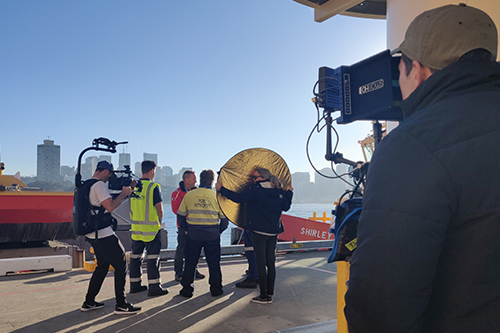04/02/2021 12:12 PM
On the frontline: working at sea amid the COVID-19 crisis
Three marine pilots from NSW reveal the challenges of working at sea amid the COVID-19 crisis as they helped ships navigate safely into port.
When the world locked down, Australia’s marine pilots continued bringing ships safely into the nation’s ports.
Australia moves 98 per cent of trade by sea, and it’s shipping that delivers the goods we depend on and takes our exports overseas. In the ports of NSW alone, around 6,000 ships visit each year and meeting them at sea are Port Authority’s marine pilots and cutter vessel crews.
In 2020, as the aviation industry stalled and our skies went quiet, the marine operations teams of NSW continued their work on the frontline of the open ocean to help captains navigate their ships into port and maintain this essential trade.
Here, three of Port Authority’s marine pilots reveal the challenges of working at sea amid the COVID-19 crisis.
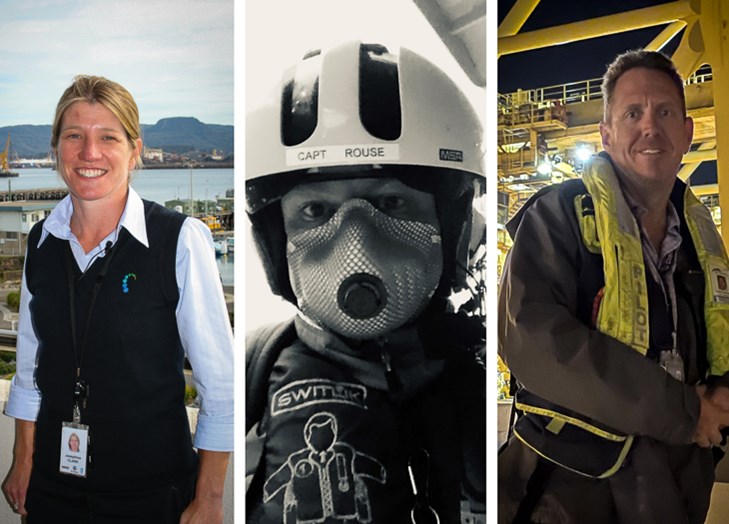 Image: Port Authority of NSW marine pilots (l-r) Jo Clark, Ricky Rouse and Lindsay Cavanagh
Image: Port Authority of NSW marine pilots (l-r) Jo Clark, Ricky Rouse and Lindsay Cavanagh
Australia’s seaports continued functioning throughout 2020 — what's the significance of this to you?
• Jo Clark, Marine Pilot, Port Kembla: It’s of tremendous economic importance to keep international and domestic trade flowing. Shipping is by far the most significant transport mode in achieving this, but the contributions of our ports to Australia isn’t always widely recognised.
• Lindsay Cavanagh, Marine Pilot, Sydney: Everyone has had to endure rapidly changing circumstances to their work environment. I think the fact that our ports have remained open and fully operational is a tribute to everyone that works in the maritime industry.
• Ricky Rouse, Marine Pilot, Newcastle: Maritime workers have shown themselves as resilient, adaptable, reliable and an invaluable resource for New South Wales and Australia. Their work, dedication and ability to keep our ports moving should never be underestimated.
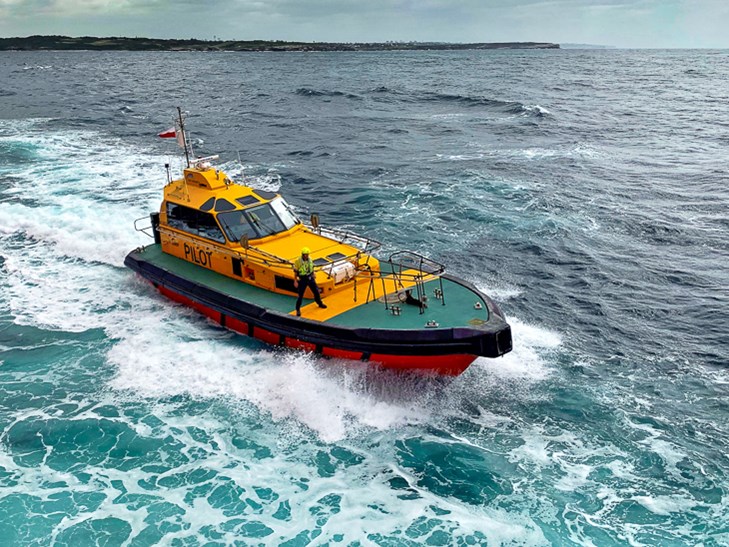 Image: A Port Authority of NSW cutter vessel heads out to meet a ship coming into Port Botany
Image: A Port Authority of NSW cutter vessel heads out to meet a ship coming into Port Botany
What is a marine pilot?
Marine pilots are highly skilled and experienced master mariners who assist large ships visiting foreign ports with local knowledge to help them safely navigate and manoeuvre their way through the channels of ports and harbours. Marine pilots meet the ships at sea on cutter vessels (or via helicopter) and climb rope ladders to transfer to the ship and head to the bridge. More about marine pilots
How has the response to COVID-19 affected your work as a marine pilot?
Jo: Using Personal Protective Equipment (PPE) like masks, surgical gloves, protective eyewear onboard ships has been one key challenge. It’s not designed for use in external environments such as on a windy bridgewing and can conflict with our standard pilotage PPE such as leather gloves and helmets. Together with social distancing, it presents a barrier in establishing effective communication with the bridge team.
Even in normal times, pilotage sometimes feels like a solo job due to long hours on the water, away from colleagues and with crews you may never meet again. COVID-19 has increased this remote feeling due to the separation of shift workers, remote handovers and lack of face-to-face contact with colleagues and other port workers.
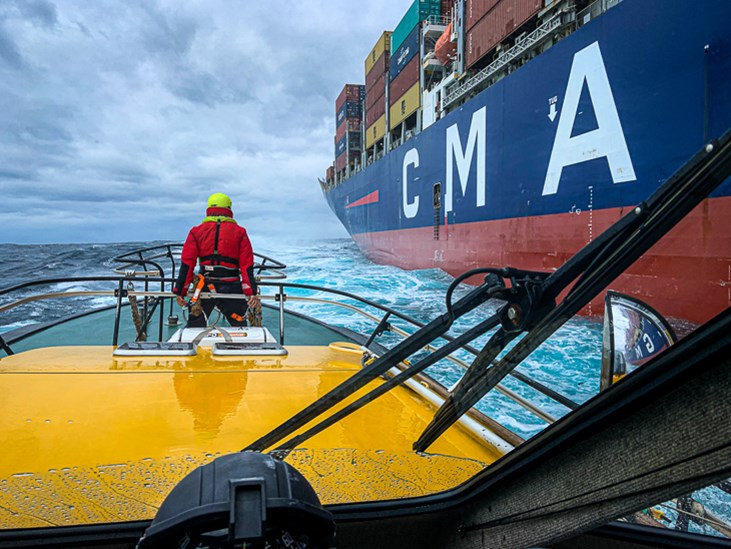 Image: A Port Authority cutter vessel approaching a ship off the coast of Sydney
Image: A Port Authority cutter vessel approaching a ship off the coast of Sydney
Lindsay: The biggest challenge was the initial response and uncertainty around COVID-19 — especially with ships that had suspected cases. As the first people onboard, it put pilots in a tricky situation — potentially putting their own health and the health of their families at risk.
Undoubtedly the key was getting effective procedures put in place quickly that reduced our risk while at the same time keeping ships moving through the ports. We had to rethink the way we allocate pilots to ships to avoid the potential of pilots crossing over onsite or having multiple pilots on the cutter vessels at the same time. We also had to allow times in the shipping schedule for the cutter crew to disinfect the pilot boat between pilot jobs. This resulted in some delays here and there, but it kept people as safe as possible.
Conducting pilotage in full PPE has presented a few issues: glasses fogging up making it difficult to see, gloves making in harder to use our iPads for navigational information, constantly sanitising hands — all while concentrating on piloting a ship. Piloting already has a very high mental workload so even minor distractions add another layer of complexity.
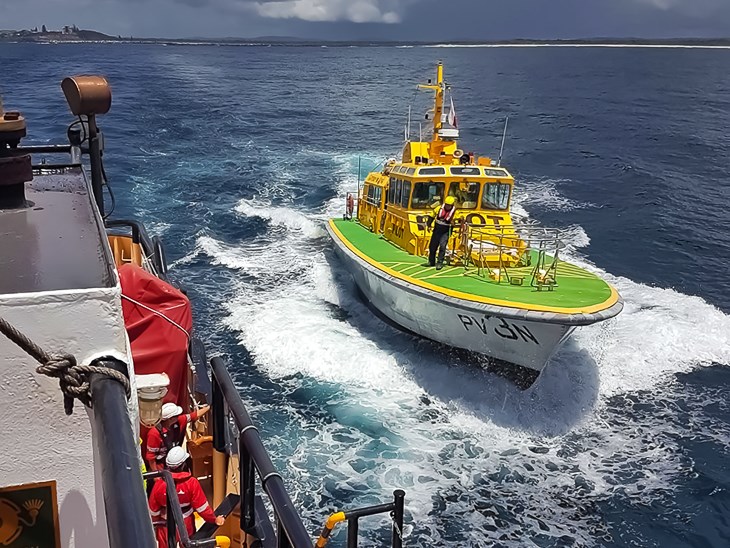 Image: A Port Authority marine pilot transferring from a vessel near Port of Yamba
Image: A Port Authority marine pilot transferring from a vessel near Port of Yamba
Ricky: The social distancing and PPE, especially when clambering up pilot ladders or stepping off helicopter hatches, has made life more difficult. Pilotage also requires strong interpersonal skills with ship crews. Wearing masks introduces new challenges in breaking down cultural barriers and reading non-verbal clues — a smile when entering the bridge can be enough to reassure a captain they are in safe hands.
Initially, when the dangers of COVID-19 were first becoming apparent, we would board ships and had to deal with the mutual fear of the virus between us and the crews. As time moved on, the next challenge was dealing with crews who had been extended beyond their standard contract length, unable to even step ashore, away from their families and having little human connection beyond the ship.
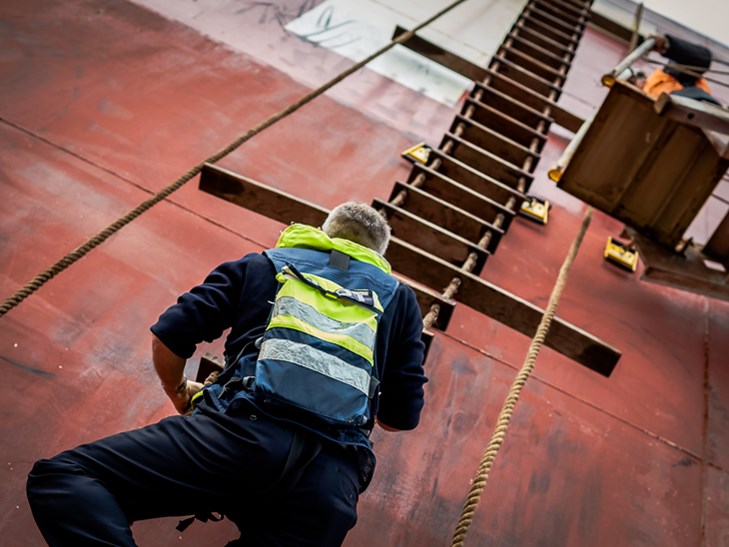 Image: A NSW marine pilot boarding a vessel at sea via a ladder
Image: A NSW marine pilot boarding a vessel at sea via a ladder
How have your interactions with ship crew and captains been when onboard?
Jo: The mood and morale of ship crews was noticeably at a low ebb. They faced the worries of indefinite swings onboard, cancellation of shore-leave and uncertainty to the risks to their own health. There were also far fewer visitors to vessels in port so the pilot may have been the only outsider a ships’ crew greeted in months. Fortunately, the situation has improved, but is still far from good.
A lifeline for seafarers during COVID-19: the unsung heroes of the sea
Lindsay: There have been a few subtle but significant changes. Social distancing on the bridge is the new normal — no more greeting people by shaking hands, we ride in elevators on our own, we take our own food and drink on board. Most ships are wary of people coming onboard and into their own “secure bubble” and crews aren’t allowed off the ship when in port.
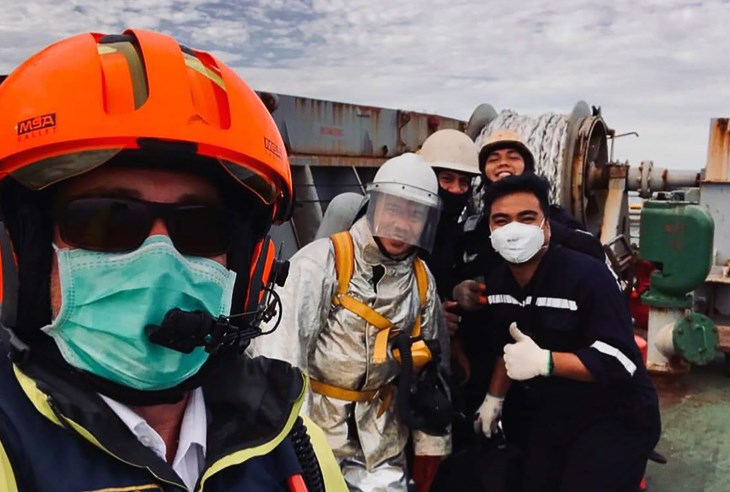 Image: A marine pilot on board with the crew of a ship in Newcastle
Image: A marine pilot on board with the crew of a ship in Newcastle
As a seafarer, it's difficult to see people that have been away from their families for extended periods of time, in some cases more than 12 months. It’s good to see initiatives like Wi-Fi boxes brought onboard so crew can video-call families at home at no cost.
Ricky: Overall, the relationships have been good, although occasionally our pilots have dealt with emotional crew who have felt despondent and forgotten. In Newcastle, we’ve worked with port stakeholders to introduce Wi-Fi units to the ships which have been gratefully received.
What memorable moment will you remember from 2020?
Jo: The gratitude shown by the master and crew of the Ruby Princess to the Wollongong community for the support and assistance they received during the COVID-19 outbreak onboard their vessel.
Lindsay: While 2020 was undoubtedly all about COVID-19, it’s important to remember those who suffered losses in the bushfires over the 2019/20 summer, including the first responders who lost their own homes while defending other people’s property. When RCCL re-deployed their cruise ship Spectrum of the Seas to Australia to put on free three-day cruises for first responders, it was great to see the maritime industry giving back to people that had given so much to help others during the devastating fires.
Ricky: Port Authority employees and others in the Port of Newcastle coming together for a virtual walk/jog/cycle from Newcastle, NSW to Newcastle upon Tyne in the UK to raise $5000 for welfare charity Mission to Seafarers.
Find out more about the role of a marine pilot
Subscribe to our newsletter for more stories from the ports and harbours of NSW

